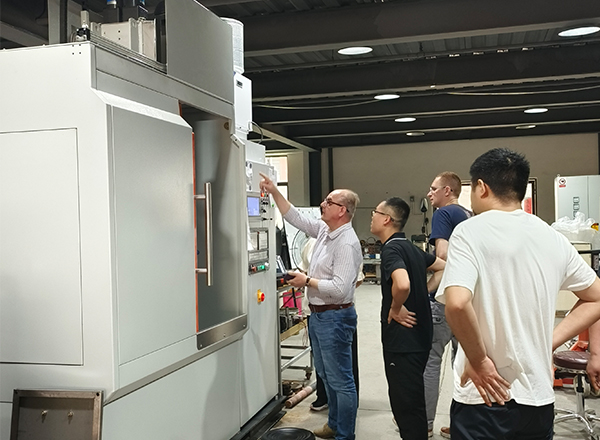
The plunger pump cage is specially used to facilitate the adjustment of the inclination angle of the swash plate on the plunger pump, and is the main component of the plunger pump. In order to ensure its service life and improve its wear resistance, we have higher requirements on the material selection and heat treatment of the cage. Due to the good hardenability of low-carbon martensitic ultra-high-strength steel, low overheating sensitivity and deformation sensitivity, and its good resistance to deformation and high yield strength, we are in the process of producing plunger pump cages Choose this material. It needs to be forged, annealed, and finished during production, and finally it is quenched and tempered by a high-frequency induction heating machine to further improve its technical performance.
The plunger pump cage should be heated at about 890°C first, then cooled in the air, then heated at 670°C, and then cooled to room temperature in the air, which is normalizing and tempering. Then carry out quenching and tempering treatment, or use a high-frequency induction heating machine to heat the cage at a temperature of 900°C, and then perform quenching treatment after holding the heat for 0.5 hours. After the whole process is over, the plunger pump cage can reach the hardness required and technical goals. There are many heating equipment on the market, here we use the one produced by Zhengzhou Gou's. This is because it is a high-power output, the performance is very stable, and it can still work for a long time under high temperature, which greatly improves the productivity. The imported IGBT module is adopted, which has a long service life, and the advanced inverter technology can save energy up to 30%. Using imported large capacitors, under full load, a large tolerance of ±10%, high temperature resistance, and high efficiency. The appearance is solid and beautiful. Current, voltage, heating, time, temperature and other displays can be seen on the display screen. It can be switched manually or automatically. It also has multiple protection devices such as overheating, overvoltage, overcurrent, and water shortage. Each electronic component is made of high-quality materials and independently developed and operated. For customers, it greatly reduces human resources, reduces raw materials, and improves productivity.




 en
en  cn
cn  jp
jp  ko
ko  de
de  es
es  it
it  ru
ru  pt
pt  vi
vi  th
th  pl
pl 



















